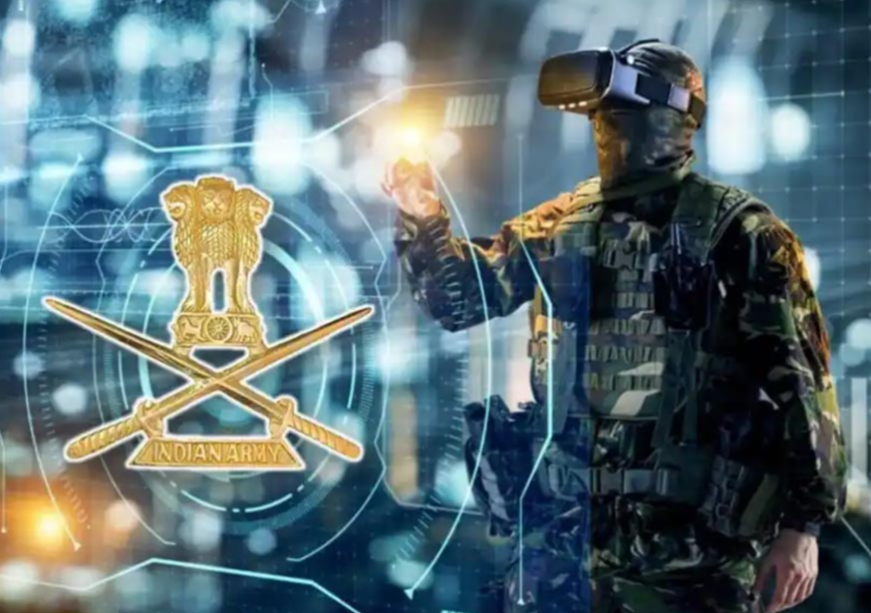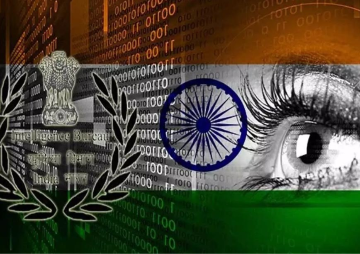
The Indian Army (IA) has established the Signals Technology Evaluation and Adaptation Group (STEAG). The stated aim of the STEAG is to leverage advanced communications technologies in the form of Artificial Intelligence (AI), 5G, 6G, Machine Learning (ML), Software Defined Radios (SDRs), Electronic Warfare (EW) systems and quantum technologies. These technologies will be integrated in a quest to ensure more effective communications between fighting and possibly logistics units dispersed across the battlefield. The IA’s endeavour is commendable in this regard as it seeks to fuse the most advanced frontier technologies into specifically its Signals Intelligence (SIGINT) capabilities for a range of tactical and operational missions and general Order of Battle (ORBAT). Communications technologies are critical to the combat performance of fighting forces and the decision-making of commanders in the field. The establishment of the STEAG is necessary and when it becomes fully operational, it will bridge an important gap in the IA’s capabilities. The STEAG, which will be run by a Colonel rank officer, will encounter many complex challenges when applying and converting all the aforementioned technologies into usable intelligence.
The IA’s endeavour is commendable in this regard as it seeks to fuse the most advanced frontier technologies into specifically its Signals Intelligence (SIGINT) capabilities for a range of tactical and operational missions and general Order of Battle (ORBAT).
There are still many issues that need to be addressed or at best remain opaque given that the IA’s announcement to create this STEAG is still skeletal. As of today, a battalion in the IA is under the command of a Colonel rank officer, which is what the STEAG envisages. By and large, the STEAG is a tactical-level entity, having some very vital, organic SIGINT capabilities. Yet, not all the signals in the battlespace can be picked up and analysed by the STEAG, it will need to be supplemented with SIGNALS or SIGINT assets at the theatre or corps and national level. The Corps of Signals (CoS) and the National Technical Reconnaissance Organisation (NTRO) will play some part in making up for the gaps in the STEAG’s capabilities. This would be akin to the American National Security Agency (NSA) addressing the shortfalls in SIGINT capabilities of the United States Marine Corps (USMC) and the US Army. Although the STEAG is still at an incipient stage, as the establishment of the STEAG progresses, the IA’s military planners will discover and will need to determine or pinpoint any deficits in the capabilities of the STEAG, which can be suitably redressed by way of the corps-, theatre- or national-level SIGINT assets.
A corollary to the above is that if the STEAG is to be truly effective, its processing and exploitation can only be functionally determined by 1) Traffic Analysis, 2) Cryptanalysis, 3) Linguistic Analysis, 4) Signal Analysis and 5) Electronic Intelligence Analysis, which will be crucial to the conversion of raw intelligence into useable or applicable SIGINT. These five elements in the processing and exploitation chain require elaboration.
Firstly, traffic analysis involves the evaluation of non-encrypted texts covering all Communications Intelligence Analysis (COMINT). Contemporary COMINT basically involves communications sent via computers. These communications involve the times at which transmission occurs, frequencies, call signs, length of messages with their distinct characteristics, indicators that are cryptographically communicated, and precedence or the history of communications.
The Corps of Signals (CoS) and the National Technical Reconnaissance Organisation (NTRO) will play some part in making up for the gaps in the STEAG’s capabilities.
Secondly, cryptanalysis involves understanding and evaluating encrypted texts—messages and data that can be converted into plain and comprehensible language. Securing decryption of the adversary’s encrypted communications is essential for cryptanalysis. Undoubtedly, the STEAG will create some capabilities for cryptanalysis, but national or central agencies such as the NTRO and the IA’s own CoS, which have a trained corpus of cryptologists, will also be required to assist.
Thirdly, linguistic analysis is also critical to service the requirements of the STEAG. It will involve translating foreign languages into English or even Hindi. India’s two primary adversaries are the People's Republic of China (PRC) and Pakistan. Apart from having linguists proficient in Urdu, Punjabi, Saraiki, Pashto and Kashmiri, proficiency in Chinese Mandarin would be absolutely indispensable for personnel staffing the STEAG. Mostly, if not all, linguistic analysis will start at the point of the collection area. STEAG’s linguistic resources will also need supplementary aid from the national-level agencies involved in intelligence.
Fourthly, signal analysis will necessitate working with a wide range of signals that will involve identification, isolation, reduction of signals to their purest forms, and ultimately the exploitation of Signals of Interest (SoI). The STEAG will need well-trained signal analysts who have all the instruments of software and electronics available to them to function and execute tasks with effectiveness.
Finally, electronic intelligence analysis will involve radar locating capabilities critical to identifying the enemy’s forward deployments, Command and Control (C2), fire control systems, weapons, and air defence systems that provide Order of Battle (ORBAT) information. Creating these organic capacities is the key challenge for the STEAG to become fully operational.
Electronic intelligence analysis will involve radar locating capabilities critical to identifying the enemy’s forward deployments, Command and Control (C2), fire control systems, weapons, and air defence systems that provide Order of Battle (ORBAT) information.
The STEAG will need organic and non-organic capabilities for the collection, processing, analysis, and the sharing of relevant information. Although its establishment is an important step, the STEAG cannot operate effectively without unity between national- and tactical-level SIGINT capabilities, mandating a high level of training and development of a very specific skill set for personnel who pack the STEAG. They will be required to support the commander in the field and beyond.
Viewed across history, the evolution and development of military non-communications technologies and military communications technologies occurred independently of commercial communications technologies. However, this is no longer the case. The separation between the military and non-military communications technologies is collapsing largely because there is a growing commercial and consumer market demand for bandwidth through the Electromagnetic Spectrum (EMS). Consequently, congestion in the sapce has grown, and commensurately, competition for the military has now intensified, which is the case worldwide. Ironically, emerging technologies that the STEAG seeks to leverage have actually crowded the EMS as well as off-the-shelf communications technologies that are commercially available. Despite these challenges, the STEAG’s establishment is laudable and a step in the right direction.
Kartik Bommakanti is a Senior Fellow at the Observer Research Foundation.
The views expressed above belong to the author(s). ORF research and analyses now available on Telegram! Click here to access our curated content — blogs, longforms and interviews.




 PREV
PREV


